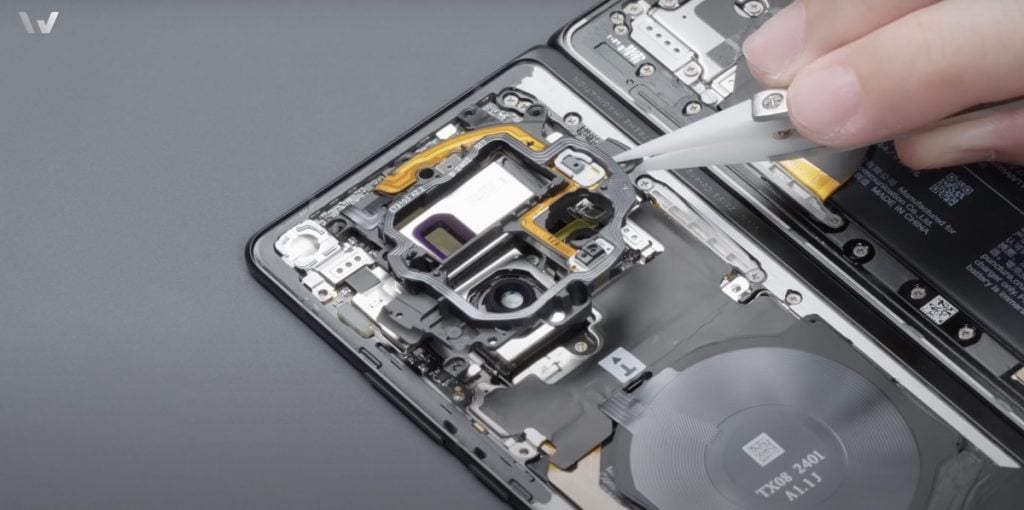The Vivo X Fold 3 Pro has taken the foldable phone world by storm, not just for its functionality but for its remarkably thin profile. But how did Vivo achieve this feat of engineering? Thankfully, the folks at WekiHome have taken it upon themselves to disassemble the phone and reveal its inner secrets in a recent teardown video.
The motherboard uses a dual-stack layout to house the triple camera setup
After removing the SIM card slot, applying some heat and prying it open with a tool, the back cover of the phone detaches. While thin, it’s constructed from a reinforced fiber composite, ensuring durability without adding unnecessary bulk. Peeling back this layer reveals the other side of the phone, dominated by a large sheet of copper foil. This acts as a thermal conductor, keeping the display panel cool even during intense use. Tucked beneath it, we find a second-generation Qualcomm ultrasonic fingerprint scanner for secure unlocking.

The journey continues with the motherboard, a marvel of compact design. It utilizes a dual-stacked layout to neatly house the triple camera system. But that’s not all! This clever design also integrates a unique plastic cover that not only protects the cameras, but also serves as a functional hub for the flash cable, microphone, ambient light sensor, and laser focus module. The teardown even provides close-up shots of these camera components, along with sample photos to pique our curiosity about their image quality.
Next, we dive deeper to encounter the powerhouse of the phone – the motherboard. Here, the Snapdragon 8 Gen 3 chip takes center stage, supported by the performance of Samsung‘s LPDDR5X RAM and UFS 4.0 storage. Vivo’s own V3 imaging chip also makes an appearance. But keeping all this processing power from overheating is an important task, entrusted to a copper vapor chamber positioned beneath the motherboard.
We also get a closer look at the speakers, microphones, and the vibration motor. The dual-cell 5,700mAh silicone anode battery, cleverly split into two 2,850mAh cells for optimal space utilization, is also revealed. Finally, the teardown concludes by showcasing the pièce de résistance – the lightweight carbon fiber hinge. Weighing in at an impressive sub-15 grams, the hinge is a big contributor to the phone’s remarkably thin design of the device.
RELATED:
- Vivo TWS 4 & TWS 4 Hi-Fi with Qualcomm S3 Gen 3 sound platform, 55dB ANC, LDAC support & spatial audio features launched
- Vivo Pad 3 Pro With Dimensity 9300, 3.1K 144Hz Display Launched In China
- Get latest Oneplus 12 Phone for $699 on Geekwills
- Get $100 OFF on Xiaomi 14 Pro at Giztop (1TB Variant)
- Best of MWC 2024: AI Phone, Transparent Laptop, 3D Tablet & More
(Via)






